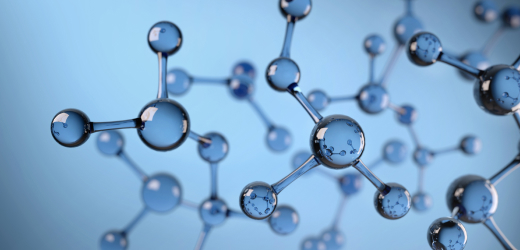Energy
| GRI 302-1 | GRI 302-3.3 | GRI 302-4 |
WACKER is constantly improving the energy efficiency of its processes. This enables us to remain globally competitive and at the same time contribute to climate protection.
Many chemical reactions generate heat that can be put to use in other production processes. In addition to recovering heat from these reactions, we also operate integrated heat-recovery systems, which we are continually developing and improving. In this way, we reduce the amount of primary energy (natural gas) consumed by our power plants. We are also continually optimizing our electricity consumption.
At this point, we still rely primarily on natural gas to generate electricity. At Burghausen, our largest site, we produce steam and electricity in a combined heat and power (CHP) plant. The site’s highly efficient, low-emission gas turbine can generate up to 137 megawatts of electricity. Combining this plant with the output of Burghausen’s hydroelectric plant and that of smaller generation facilities, we produced 1,130 GWh of our electricity ourselves in the reporting year (2022: 1,166 GWh), which corresponds to roughly 20 percent of our total electricity demand. With an output of 50 megawatts, our hydropower generator is one of Germany’s biggest industrial hydroelectric power plants. In keeping with its sustainability strategy, WACKER plans to further reduce its energy and gas consumption by pursuing energy-efficiency initiatives (e.g. electrifying steam generation).
|
|
|
|
|
|
|
|||||||||||
GWh |
|
2023 |
|
2022 |
|
2021 |
|||||||||||
|---|---|---|---|---|---|---|---|---|---|---|---|---|---|---|---|---|---|
|
|
|
|
|
|
|
|||||||||||
Electricity consumption |
|
5,749 |
|
6,024 |
|
5,974 |
|||||||||||
Of which |
|
|
|
|
|
|
|||||||||||
From on-site generation (fossil) |
|
897 |
|
948 |
|
1,063 |
|||||||||||
From on-site generation (renewable) |
|
233 |
|
218 |
|
232 |
|||||||||||
Energy consumption1 |
|
5,814 |
|
5,927 |
|
6,010 |
|||||||||||
Of which |
|
|
|
|
|
|
|||||||||||
Natural gas2, 3 |
|
4,183 |
|
4,290 |
|
4,424 |
|||||||||||
Solid fuels4 |
|
1,320 |
|
1,336 |
|
1,297 |
|||||||||||
Heat supplied by third parties5 |
|
311 |
|
301 |
|
289 |
|||||||||||
|
|||||||||||||||||
Energy Consumption
In our continued efforts to reduce our specific energy consumption (the amount of energy per unit of net production output), we have set a target of cutting consumption by 15 percent by 2030 relative to our base year (2020).
|
|
|
|
|
|
|
|
|
2023 |
|
2022 |
|
2021 |
|---|---|---|---|---|---|---|
|
|
|
|
|
|
|
Specific energy consumption (%) |
|
102.9 |
|
98.5 |
|
98.3 |
Change in % (vs. 2020) |
|
2.9 |
|
-1.5 |
|
-1.7 |
With specific energy consumption 3 percent up relative to 2020, reductions in the reporting year were above the trajectory that had been mapped out. Despite energy savings, the substantial decline in plant-utilization rates and hence the lower unit of net production output, as well as the process of switching over to more energy-intensive products, have an adverse impact on the target value.

